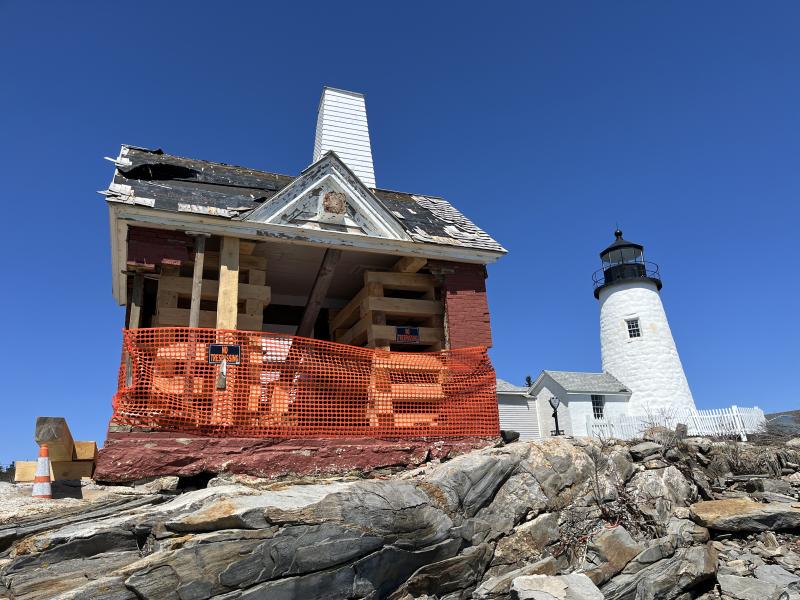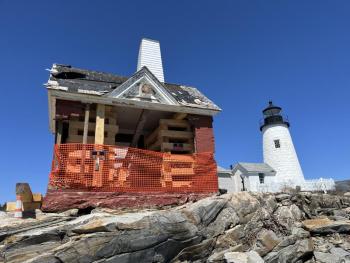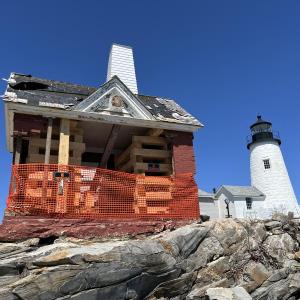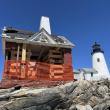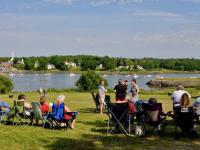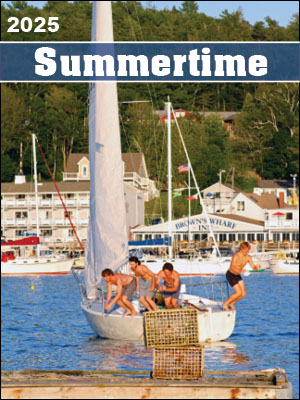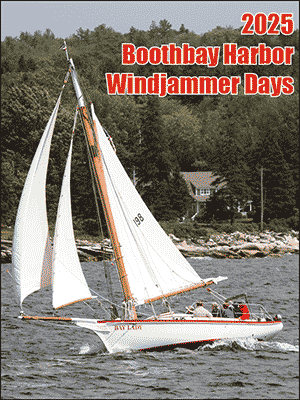Boothbay area lighthouses are on global endangered monuments list
What do Africa’s Swahili Coast and the Chapel of the Sorbonne in France have in common with Ram Island Lighhouse? They are all on a list of endangered monuments and cultural sites across the globe. Jan. 15, World Monuments Fund (WMF) added the lighthouses of Maine to its 2025 World Monument Watch, citing intensifying coastal threats from the effects of climate change.
The lighthouses of Maine were included in the list along with 24 other at-risk historical and cultural heritage sites across five continents, and even the moon. The list features sites facing major challenges including climate change, conflict, and natural disaster, from war-torn Ukraine and Gaza to the storm-surged coasts of East Africa and Maine. Of Maine's 66 lighthouses, the Boothbay area includes Cuckolds Lighthouse, Hendrick’s Head Lighthouse, and Burnt Island Light in Southport, and Ram Island Light Station in East Boothbay.
“We're all hands at this, and we're delighted to be part of (this list),” said Bob Ryan, executive director of the Grand Banks Schooner Museum Trust that stewards Ram Island Light Station. “It is delightful to see that the Maine lights are on there.”
According to WMF, 57 of Maine’s lighthouses still guide navigation, now using GPS and modern automated systems. Ownership of these stations has been transferred to local and state government agencies, non-profit organizations, and private individuals who steward them. However, the U.S. Coast Guard still maintains much of the light operation. Ryan said Ram Island Light Station, like many, is offshore on a harsh environment, which can be logistically challenging for upkeep.
The January 2024 storms highlighted the vulnerability of Maine’s coastline and lighthouses to changing climate and weather events. According to WMF, the storms caused an estimated $5.5 million in damage to lighthouses in Maine. Locally, the Ram Island Light Station walkway and landing were destroyed and Pemaquid Point Lighthouse Park in Bristol suffered extensive damage.
“Lighthouses like the coast in general have, at least in recent history, experienced an onslaught of weather and storms ... And we're no exception,” Ryan said.
According to the Gulf of Maine Research Institute, the Gulf of Maine is warming faster than 99% of the global ocean and at three times the global rate; that rapid change has been linked to intensifying weather events and sea-level rise. Because each of Maine’s light stations was purposefully built on islands and low-lying peninsulas, it makes them “extremely vulnerable” to rising sea levels and storm surge, according to WMF.
“The widespread damage caused by the January 2024 storms has forever changed the conversation and course of lighthouse preservation in Maine and beyond,” said Executive Director of the American Lighthouse Foundation Bob Trapani Jr. in a press release. “Having Maine’s light stations named to the WMF’s 2025 Watch List is an amazing boost for these historic treasures and the work needed to make them more resilient.”

